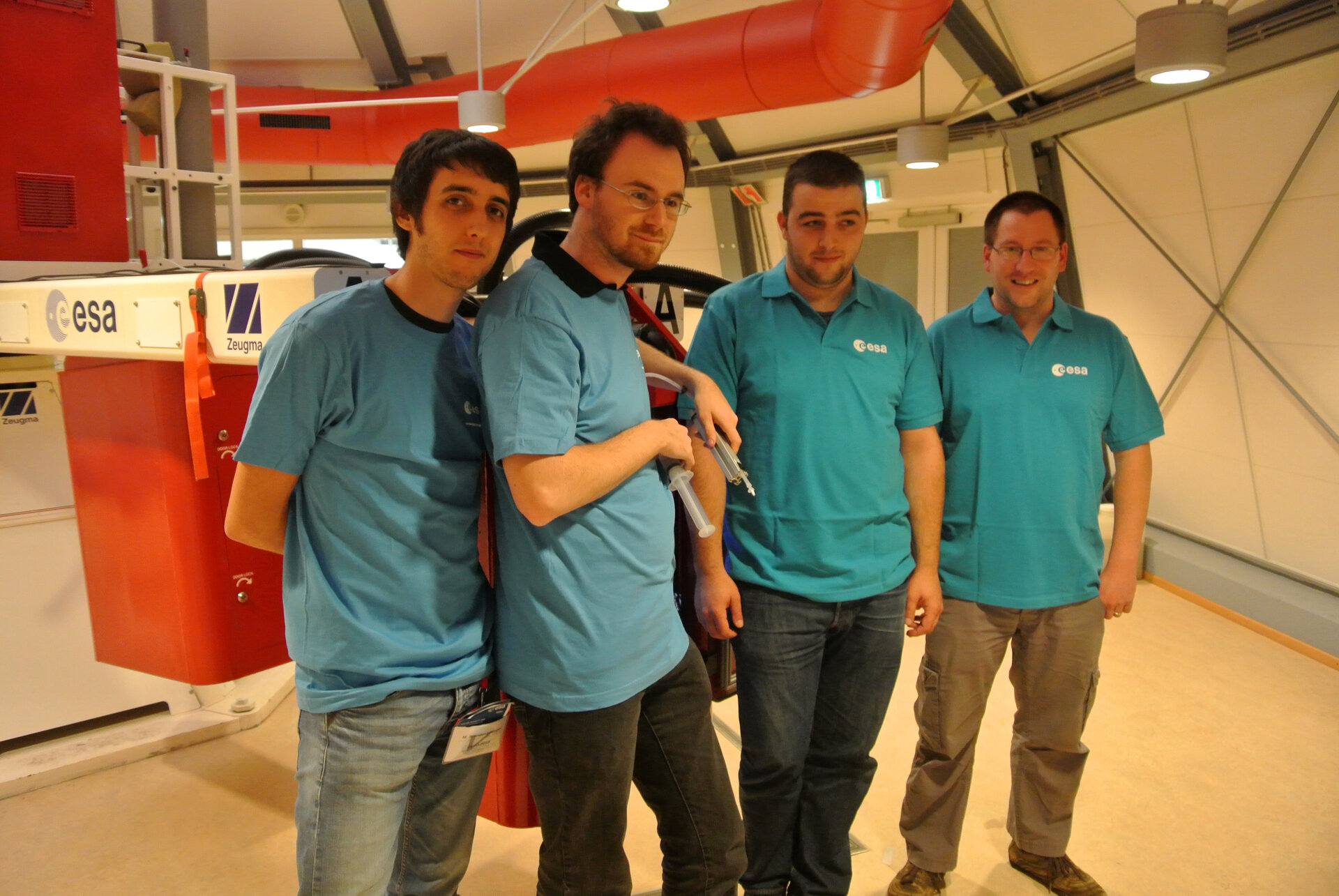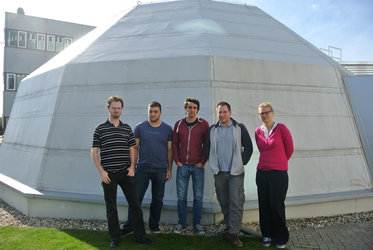Results of droplets evaporating in hypergravity published in research paper
A university student team investigating the evaporation of droplets have had their results published in a professional science journal. The experiment was performed in ESA’s Large Diameter Centrifuge in ESTEC, The Netherlands, thanks to the ESA Education Office’s Spin your Thesis! programme.
The team from the University of Liège in Belgium studied the Leidenfrost effect, a phenomenon that can occur when drops of a liquid are released onto a heated surface and evaporate. Above a certain temperature, the drop levitates on a film of its own vapour. This prevents contact with the surface and slows down the speed at which the liquid vaporises. Applications can be imagined in which objects supported by the drops can be moved across hot surfaces without friction.
The team designed the experiment to test the effects of gravity on evaporation time, and the behaviour of the droplet during evaporation.
The initial setup consisted of a heated surface that could be inclined by servo-motors. An infra-red camera, situated above the surface, located the droplet and if the drop moved from the centre of the plate a response was applied to the servo-motors. This was designed to keep the droplet in the same place because usually they are extremely mobile.

However, during the hypergravity campaign it was swiftly discovered that the system was not quick enough to stop the droplet from running off the plate. Thinking fast, the team came up with a new solution, which was to place an aluminium ring on the plate. The ring was heated by the plate and so confined the drops.
An ordinary video camera recorded the evaporation for analysis.
They ran the experiment at 5, 10, 15 and 20 times the natural pull of Earth’s gravity. Their results show that evaporation time goes down as the gravity level goes up.
“This result may not be a surprise but we had to do it anyway because no one had done the experiment before,” said Stéphane Dorbolo, University of Liège, who was the team’s endorsing professor.
In addition, they discovered that the Leidenfrost point, the critical temperature above which the effect takes place, increased slightly with gravity. This increase was expected. As the gravity increases, the film thickness of large drops is reduced. Thus, probabilities of contacts between the liquid and the substrate due to instabilities at the bottom interface of the drops are increased.
Finally they observed the appearance of ‘chimneys’ in the centre of the largest droplets. These are bumps that develop, giving the appearance of the yolk in the centre of a fried egg. The team found that the distance between adjacent chimneys decreased as the gravity increased.
All their results have just been published in EPL, A Letters Journal Exploring the Frontiers of Physics. The principal authors were the team members Laurent Maquet and Martin Brandenbourger, both PhD students at the University of Liège. They found this hands-on experience, the scientific support of their ELGRA mentor and the collaboration with ESA experts excellent for their development as scientists.
“Working with the experts to get everything ready was valuable. It helps whenever I start working on a new experimental setup,” said Laurent Maquet.
The Spin Your Thesis! programme allows undergraduate, Masters and PhD student teams the opportunity to conduct experiments in ESA’s Large Diameter Centrifuge (LDC). This is a world-class facility and can achieve gravitational forces between 1 and 20 g.
Four teams of university students are currently developing experiments for the sixth ‘Spin Your Thesis!’ campaign, which will be held 7-18 September 2015.
Notes for editors:
Leidenfrost drops: Effect of gravity by L. Maquet, M. Brandenbourger, B. Sobac, A.-L. Biance, P. Colinet and S. Dorbolo is published in EPL, 110 (2015) 2400, doi: 10.1209/0295-5075/110/24001.





